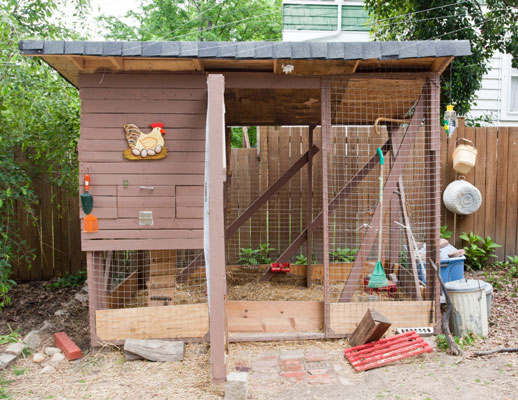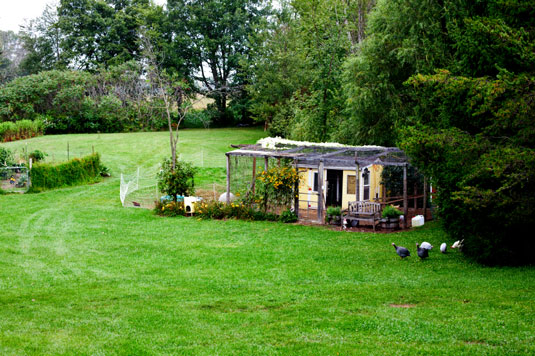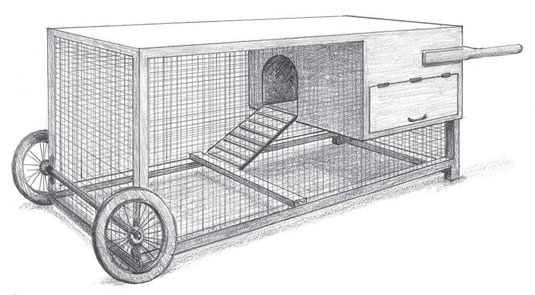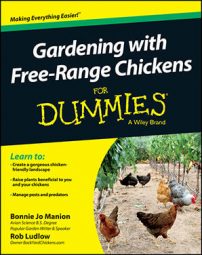Chickens are very hardy and adaptable to many types of environments. How do chickens fit in with your lifestyle? Maybe you’re a city slicker in a very urban environment with little spare time. Perhaps you’re part of a trendy family in the’burbs growing your own food. Maybe you’re a true country homesteader and love working your land.
Quite possibly you’re an interesting combination of these three examples.
City urban chickens

Chickens can thrive in a city environment. As an extreme example, consider the family who raised two chicks to mature egg-laying hens in their Manhattan high-rise apartment (in the shadow of the Empire State Building).
The New York Times covered this family’s story in 2007, noting that, according to the Department of Health and Mental Hygiene, roosters aren’t allowed in New York City, but chicks and hens are. Always check first with your city’s codes, zoning, and regulations regarding raising chickens.
In cities, space is always a premium. Consider bantam chickens, the smaller-sized chicken breeds that require less space for a coop and an outside run. Smaller chickens can mean smaller size eggs, although some bantam chickens lay large eggs relative to their body size. Perhaps you might consider having 6 bantam chickens versus 3 large (standard) hens.
A pint-size flock of two to three bantams may fit comfortably in a narrow side yard, or you may want to trade your postage size lawn for a coop and outside pen. Also consider whether you have a space that could be cleaned up by the alley or off of your back porch. Chickens are entertainment and a fresh food source, all in one.
Chickens can free range in an urban environment if they are permitted first under zoning, and second, in a more limited way than in a suburban or rural environment. City lots are small, but can accommodate small flocks under close supervision. Community gardens, thrilled with working together growing food are joining forces and including a community chicken flock.
Perhaps you work long hours, eight hours or more each day. Because you aren’t around much during the week, and your lifestyle raising chickens may be one of a more contained chicken flock in a more protected coop and outside pen set-up.
On weekends, when you’re relaxing with the Sunday crossword puzzle, you can let your chickens out to free-range when you have more time.
Don’t be caught off-guard. Even in the city, plenty of predators are interested in your chickens. Predators preying on chickens can be found in a city environment, just as much as in a rural environment. Raccoons and dogs are main predators in a city environment.
Suburban chic flocks

Perhaps you’re a modern family with two children and a family dog. You fell in love with your home because it has space for ornamental and vegetable gardens. You’ve caught the bug of sustainability, growing as much of your food as you can, and you experiment with all kinds of heirloom seeds. Nothing makes you happier than spending as much time in your garden as you can.
You designed your garden for relaxing, entertaining, and eating what you grow from your garden. Raising chickens in your garden seems like the next logical step, and your children are eager to help. Someone is usually home during the day, and weekends can be busy with entertaining friends.
You’re an innovative, creative type and can further fit a chicken coop and chicken runs into your garden design. Your garden is mature to the point where your chickens have shelter, food, and protection when they free-range in your garden.
Your children consider their chickens as family pets, and are always willing to check on them and give them treats. You’ve trained your dog to be a protector of your chickens in your garden. Your entire backyard is fenced in. Your chickens and chicken coop are a functioning integral part of your garden.
You’ve calculated your garden space and you easily have room for eight hens. You have plenty of room for large (standard) chicken breeds that are docile and people-friendly. Because you’re new to raising chickens, you want to play it safe and start first with five hens. Five hens will also cover the fresh egg needs for your family, and entertaining.
Country homesteader chickens

Perhaps you’ve given up what was your “rat race” and now are living your dream, living on a small farm with acreage. You have two dogs, two horses, and a yearning for more livestock.
Your neighbor introduced you to the Barnevelder poultry breed, and you love their eggs. You are curious about this breed, and research it more. You decide you are going to add a flock of Barnevelder hens to your menagerie.
Originally an old Dutch poultry breed, it’s less common than other poultry breeds today. Barnevelder hens lay popular dark brown eggs. It’s a hardy breed, slow growing, moderate layers, and great foragers. These chickens are dark feathered and blend in with their environment. They’re also a docile breed.
You feel the Barnevelder breed will pasture nicely on your farm, and you love everything about their eggs. You like the idea of raising the Barnevelder breed on your farm, and supporting the comeback of this breed.
You start with a 12 chicks initially. When these chicks reach maturity as laying hens, you plan on implementing a special breeding enclosure close to the barn, along with the addition of one lucky Barnevelder rooster.
Next, you build a mobile chicken coop that looks a little like a “gypsy wagon” for use when they pasture. A mobile chicken coop is a chicken coop on wheels. Your hens use a ramp to enter and exit the mobile chicken tractor to lay their eggs in the morning, and return at night for safety.

